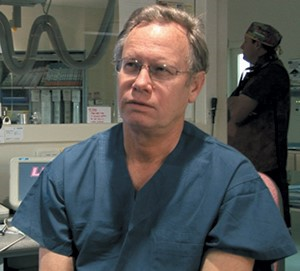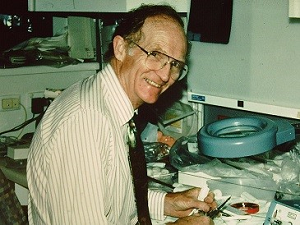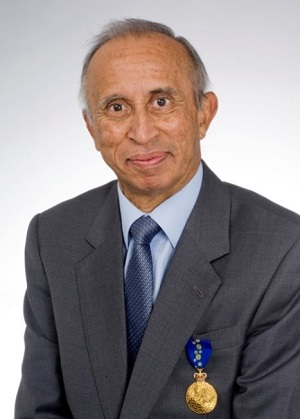RPH Imaging Research Fund History
In the late 1990s, Professor Michael Lawrence-Brown, Vascular Surgeon, and Mr David Hartley, Medical Imaging Technologist, developed an abdominal aortic stent graft while employed at Royal Perth Hospital (RPH). The royalties from this device sit under the governance of the East Metropolitan Health Service (EMHS) and are administered through a a steering committee.
In 2015, Cabinet approved the use of these royalties for the establishment of two Professorial Chairs of Vascular Surgery and Radiology. In addition to supporting the Chair positions, the steering committee has endorsed the provision of a funding budget to be allocated for research across both Vascular Surgery and Radiology.
Royal Perth Hospital
Established in 1829, RPH is Western Australia’s longest-servicing hospital and renowned for contributing to innovation and excellence in medical research and patient care.
RPH is part of the East Metropolitan Health Service and has numerous joint appointments with the local universities. RPH has built a global reputation in research and innovation, hosted many significant medical breakthroughs and has an enviable reputation that includes Nobel Prize-winning discoveries.
Visit the RPH History page to learn more.
Radiology Department
The Radiology Department at RPH has a strong history as a vibrant and busy tertiary department, providing a vital diagnostic service to inpatients and outpatients 24 hours a day, seven days a week. Each year more than 160,000 imaging procedures are performed and reported on by a team of highly skilled imaging professionals.
With its commitment to providing exceptional health care, the department strives to lead its field in change initiatives and strategies. Having achieved the Department of Health’s Diagnostic Imaging Accreditation, the quality of the day to day operations of the department are evidence to the patient focused delivery of diagnostic imaging services.
With more than 160 staff, the department offers world class diagnostic services in multiple imaging disciplines, including computed tomography (CT), magnetic resonance imaging (MRI), ultrasound, general x-ray, fluoroscopy, mammography and interventional procedures.
Additionally, the Radiology Department works in close collaboration with other imaging entities, including the RPH Nuclear Medicine Department and BreastScreen WA. Services provided by our team extend beyond the Radiology Department, as Medical Imaging Technologists (MITs) provide extensive services throughout the hospital in areas such as the State Adult Major Trauma Unit, theatres, gastroenterology and mobile imaging on wards.
For many years the Radiology Department has taken pride in training imaging professionals of the future, in partnership with tertiary institutions; a tradition which is anticipated to continue for years to come.
Our Researchers
Professor Michael Lawrence-Brown
 Michael Lawrence-Brown studied medicine at the University of New South Wales and qualified with Honours in 1971. Michael was appointed Surgical Registrar at the RPH in 1974 and obtained Fellowship of the Royal Australian College of Surgeons in 1978. He was Senior Lecturer in Surgery at the Repatriation General Hospital 1982-1989 and from 1984 Consultant in Vascular Surgery, RPH. He is a member of the International Society of Cardiovascular Surgery and a member of the International Society of Endovascular Therapists.
Michael Lawrence-Brown studied medicine at the University of New South Wales and qualified with Honours in 1971. Michael was appointed Surgical Registrar at the RPH in 1974 and obtained Fellowship of the Royal Australian College of Surgeons in 1978. He was Senior Lecturer in Surgery at the Repatriation General Hospital 1982-1989 and from 1984 Consultant in Vascular Surgery, RPH. He is a member of the International Society of Cardiovascular Surgery and a member of the International Society of Endovascular Therapists.
Always interested in research, Michael worked with scientists, engineers, academics and other doctors in the Universities of Western Australia and Curtin University of Technology, Perth Teaching hospitals and CSIRO in Melbourne.
Michael has been Chairman of the Royal College of Surgeons, WA Branch and a member of the sub-committee of the division of training in vascular surgery. For some time he was Head of the Department of Vascular Surgery and largely as a result of his work the RPH has become one of the most desired training hospitals in vascular surgery within Australia. He has had an impressive number of "firsts" to his credit during his time at the RPH, including introducing pressure garments for burns to the establishing of a surgical audit in general surgery, setting up the Quality Assurance Department, and introducing intra operative blood cell salvage with cell washers to Australia.
Michael was also the chief investigator of the abdominal aortic aneurysm screening program funded by the National Health and Medical Research Council in Western Australia. Michael is co-inventor of the Zenith endoluminal graft for arterial aneurysmal disease that is used worldwide.
David Hartley
 David Hartley commenced his Radiography Cadetship at RPH in 1959.
David Hartley commenced his Radiography Cadetship at RPH in 1959.
Upon qualifying as a radiographer in 1961, he was appointed as “Radiographer, Special and Interventional Procedures”.
An additional advantage of working predominately in the Specials and Interventional field was that it brought him into close relationship with clinicians who were keen to further the science and were generous in including him in their various research and development projects.
David was admitted as Fellow of the Australian Institute of Radiography (by examination) in 1969.
In 1971 he was appointed Superintendent Radiographer and held this position for a period of 25 years.
In 1997 he retired from his position in the Medical Imaging Division and was re-appointed to a part-time post as “Technical Consultant, Cardiovascular and Medical Imaging Divisions”, in conjunction with a joint appointment as “Founding Director, Cook Medical Research and Development WA”, working from a laboratory in the Medical Research Foundation building at RPH.
In 2005 David retired from his appointed position at RPH and Cook Research and Development WA was transferred into an enlarged facility in West Perth.
David is named as inventor or co-inventor on more than 76 patents from his period of involvement with Cook Medical.
David retired from active everyday work in 2010.
Remembering Professor Turab (2019)
 For more than 40 years Professor Chakera was an immense and vital figure to the RPH Radiology Department and to radiology across WA.
For more than 40 years Professor Chakera was an immense and vital figure to the RPH Radiology Department and to radiology across WA.
Described as a man of vision for whom nothing was impossible, Professor Chakera had the knack of winning people over to get things done while being passionate, kind and showed great compassion – a true mentor to many of the current radiologists in Perth.
Professor Chakera travelled from Tanzania, East Africa, to Birmingham, England, to study at the Birmingham Medical School. From there he worked with the Royal Flying Doctors Service in Zambia. From 1970 to 1974 Professor Chakera studied Radiology at the Birmingham Medical School and became an Honorary Fellow of the British College of Physicians.
Professor Chakera then joined the Radiology Department at RPH in March 1975, becoming Head of Department in 1978 and went on to champion the Radiology Department through technological advances and expansion.
He had an appetite for hard work and was legendary in his persistence when in pursuit of something he believed would benefit the Department, and its service to the Hospital. He was dedicated through his lifetime membership with the Royal Australian and New Zealand Collage of Radiologists to providing the people of WA with the best radiology services possible.
Professor Chakera was recognised countless times for his outstanding career achievements. Most notably, he was appointed a Member of the Order of Australia in 2010 for service to diagnostic radiology as a clinician and educator and through a range of professional associations.
Professor Chakera authored more than 50 academic articles and publications in distinguished radiology journals. He was responsible for planning and coordinating a state-based radiology training program for registrars, the first network of its kind in Australia, which has since been used as a model in other states and in New Zealand.
In addition, he was instrumental in introducing a system wide picture archiving and communication system (PACS) to the public hospitals. Recognising his significant contribution to training and teaching, he became the namesake of the Professor Chakera Award for Excellence in Radiology Teaching, which is awarded annually in WA. Professor Chakera’s dedication to RPH, the College and the profession is unparalleled, and he leaves behind a profound legacy and true to his caring spirit, one that will continue to benefit Australians for many years to come.

